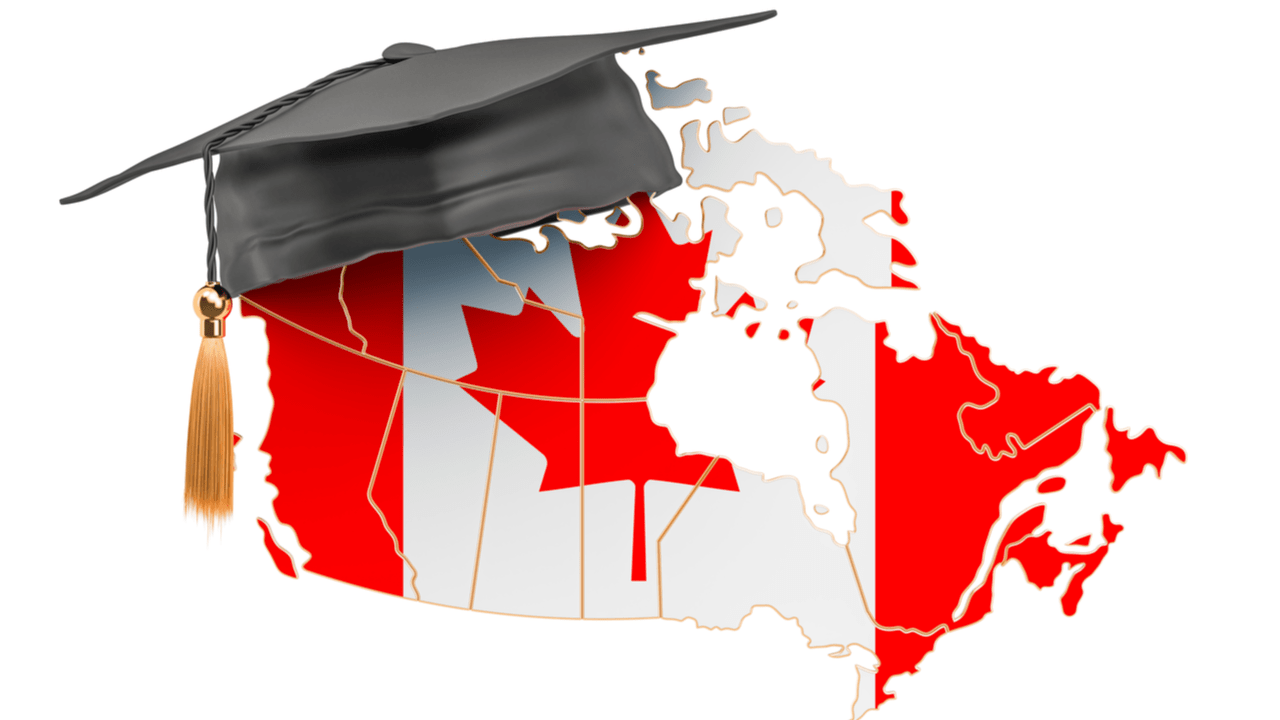Why Canada? Full scholarships, a 3-year work window, and employers who hire international grads

If you’re reading this, you’re probably imagining two things at once: (1) a full scholarship that pays for tuition, housing, maybe even flights, and (2) a clear path from campus to a well-paid job after graduation. Canada is one of the few countries that realistically lines up both opportunities — world-class universities that employers respect, and immigration rules designed to let graduates gain Canadian work experience.
Two official resources you’ll want to bookmark early:
-
How to study in Canada (study permit basics): https://www.canada.ca/en/immigration-refugees-citizenship/services/study-canada/study-permit.html
-
Post-Graduation Work Permit Program (PGWPP) details and eligibility (including the 3-year rule): https://www.canada.ca/en/immigration-refugees-citizenship/services/study-canada/work/after-graduation.html
The bottom line: If you study at a designated learning institution (DLI), finish a qualifying program, and can secure funding that covers costs, you can graduate with a degree employers value and — in many cases — leave with up to a three-year PGWP to find work.
Study in Canada with a Full Scholarship (H2 keyword)
Full scholarships for international students in Canada are competitive but real. There are three main routes to a “full scholarship” scenario:
-
University-award full scholarships — e.g., high-value merit awards, limited in number but often cover tuition and living costs.
-
National or external fellowships — for graduate students (PhD/masters), such as Vanier or other research fellowships.
-
Combination of need-based and merit funding — multiple awards plus bursaries that together reduce out-of-pocket costs substantially.
Common realities and myths
-
Myth: “Full scholarship” always means everything paid (tuition + living + flights). Reality: Many university full scholarships cover tuition and a stipend, but living costs may still require planning.
-
Reality: Undergraduate full-ride scholarships exist (e.g., highly selective institutional awards). Graduate full funding (especially for research degrees) is actually more common through fellowships and funded RA/TA positions.
How to target scholarships (practical checklist)
-
Start early (12–18 months before program start).
-
Build a strong academic record and compelling personal statement.
-
Get recent, specific recommendation letters (academic + professional where relevant).
-
Highlight leadership, impact projects, and community work — scholarship panels want ROI.
-
For research programs, identify supervisors and reach out with concise proposals.
-
Use university financial aid pages and centralized scholarship portals to apply — don’t rely on general job boards.
3-Year Post-Grad Work Permit (PGWP): What to know and how to maximize it (H2 keyword)
The PGWP is a game changer. Here are the must-know points:
-
Eligibility basics: You must graduate from a designated learning institution (DLI) and complete a program that was at least 8 months in duration. The PGWP length is tied to your program length: programs under 8 months — no PGWP; programs 8 months to <2 years — PGWP equal to program length; programs ≥2 years — PGWP up to 3 years. Official guide: https://www.canada.ca/en/immigration-refugees-citizenship/services/study-canada/work/after-graduation.html
-
Single application: You apply once after graduation; the timing is crucial — apply within the timeframe IRCC sets (typically within 180 days of getting formal written confirmation of program completion).
-
Work flexibility: The PGWP allows full-time work for any employer in Canada. It’s not employer-specific.
-
Path to permanent residency: Canadian work experience gained on a PGWP is valuable for Express Entry and many provincial nominee programs (PNPs).
Strategy to maximize PGWP benefits
-
Choose a 2-year (or longer) program when possible — you’ll get up to a 3-year PGWP.
-
Attend institutions with strong co-op or internship pipelines — work integrated learning boosts employability and shows Canadian work experience to PR selectors.
-
Time your PGWP application and job search to transition from study to work smoothly without gaps in status (or use co-op work permits where relevant).
Top 7 Universities Employers Love — quick overview
Employers in Canada (and globally) consistently hire grads from certain institutions because of reputation, co-op programs, industry partnerships, and strong career services.
Below is a compact table you can scan fast. It highlights each university’s employer strengths, typical scholarship opportunities, PGWP friendliness, and co-op strength.
| University | Strengths employers love | Typical scholarship options (examples) | PGWP friendliness | Co-op / Internships |
|---|---|---|---|---|
| University of Toronto (U of T) | Global brand, research intensity, finance & consulting pipelines | Lester B. Pearson (select), departmental awards, merit scholarships | Strong — DLI; programs 2+ years → 3-year PGWP | Strong industry links; good placements |
| University of British Columbia (UBC) | West Coast tech links, sustainability, research | International Leader of Tomorrow, departmental awards | Strong — DLI; programs 2+ years → 3-year PGWP | Good industry ties; Vancouver tech scene |
| McGill University | International reputation, med/research links, consulting | Need/merit scholarships; graduate funding | Strong — DLI; programs 2+ years → 3-year PGWP | Good employer network; Montreal ecosystem |
| University of Waterloo | World leader for co-op; top for CS/engineering | Entrance scholarships; co-op paid placements | Strong — DLI; programs 2+ years → 3-year PGWP | Industry-leading co-op; many hires from co-op |
| McMaster University | Health sciences, engineering, experiential learning | Faculty awards; research assistantships | Strong — DLI; programs 2+ years → 3-year PGWP | Good co-op/practicum options |
| University of Alberta | Energy, engineering, research | International and faculty scholarships; research funding | Strong — DLI; programs 2+ years → 3-year PGWP | Regional industry links |
| Queen’s University (Kingston) | Business/finance reputation (Smith School), alumni network | Entrance scholarships; merit awards | Strong — DLI; programs 2+ years → 3-year PGWP | Career services + employer events |
(Notes: scholarship names and availability change by year — always check each university’s official financial aid page.)
Why these seven? (short explanation)
-
Waterloo: Employer-facing co-op program graduates are hired straight from co-op placements — that translates to fast full-time job offers.
-
U of Toronto & UBC: Global brands that appear on recruiter shortlists; alumni networks are huge.
-
McGill & Queen’s: Strong international reputation and niche strengths (e.g., Queen’s Smith School for business, McGill for medicine & research).
-
McMaster & Alberta: Strong regional employer ties and practical programs in health and engineering.
How to get a full scholarship at one of these universities (step-by-step) — actionable checklist
-
Research program by program
-
Identify the exact program (e.g., MEng in Computer Systems vs MCS in Software Engineering) — scholarship eligibility often depends on program code.
-
-
Target programs with internal scholarships
-
Look for “entrance scholarships” and “international awards” pages. Example targets: entrance scholarship streams, leadership awards, and specific faculty awards.
-
-
Prepare a scholarship application package
-
Academic transcript (official), two or three strong letters of recommendation, a 1,000-word personal statement / scholarship pitch focused on impact, and a CV that lists projects with measurable results.
-
-
For research degrees: contact a supervisor
-
Short, tailored email with a one-paragraph research pitch and why you fit. Attach a 1-page summary of your past research or relevant project.
-
-
Apply early and follow instructions exactly
-
Many scholarships are automatic on admission; others require an additional application.
-
-
Highlight “employability” evidence
-
Employers love practical proof: internships, co-op, applied research, competitions, GitHub projects, startups, or publications.
-
-
Use external funding too
-
Apply for scholarships from your home country, international foundations, and corporate scholarships that might transfer to your Canadian tuition.
-
How to turn a degree and PGWP into a hire — employer-focused playbook ( How to Get Hired)
Getting hired in Canada requires more than a degree: you must prove value in a Canadian context.
1. Start building your Canadian employability while studying
-
Get work-integrated experience (co-op, internships, practicum).
-
Use university career services for resume reviews and mock interviews.
-
Target jobs by function (data analyst, software engineer) and learn the keywords recruiters use.
2. Create a Canadianized resume and LinkedIn
-
Short, results-focused bullets (achievement + metric).
-
Include “Relevant Canadian experience” — even volunteer or class projects count.
-
Ask Canadian supervisors/mentors for LinkedIn recommendations.
3. Network intentionally, not generally
-
Attend faculty employer nights and student club events.
-
Email alumni in target companies with a specific ask (15-minute coffee chat + one question).
-
Follow up with a thank-you and a specific next step (e.g., ask to be considered for an upcoming co-op opening).
4. Leverage co-op and career fairs
-
Co-op is the single most direct path to a full-time offer at many Canadian employers.
-
Prepare a 30-second intro, 2-page project summary, and clear ask (co-op, internship, entry role).
5. Ace the interview (technical and behavioral)
-
Study STAR method (Situation, Task, Action, Result) for behavioral answers.
-
Prepare for technical interviews with mock rounds and problem practice.
-
Bring a portfolio or project that demonstrates impact.
6. Use PGWP strategically
-
Don’t wait until the end of PGWP to start job hunting — build relationships early.
-
Use the PGWP period to gain full-time experience; one strong year of Canadian work experience significantly improves PR prospects.
Quick guide: Programs that give you the full 3-year PGWP
-
Programs of 2 years or longer at a DLI generally qualify for the full three-year PGWP.
-
Many 2-year master’s programs (course-based or research) will meet this threshold.
-
Planning tip: Opt for programs that explicitly state DLI status and check PGWP eligibility notes on the university page.
(Official PGWP eligibility reference: https://www.canada.ca/en/immigration-refugees-citizenship/services/study-canada/work/after-graduation.html)
Scholarship spotlight: examples (what to look for)
-
Undergraduate: Institutional merit scholarships (some universities advertise high-value awards titled “global excellence” or “full entrance scholarships”).
-
Graduate: Research assistantships, TA/RA positions, and national fellowships (e.g., Vanier Canada Graduate Scholarships for doctoral candidates).
-
Need-based: Universities sometimes combine need-based awards with merit funding to create near-full coverage.
Pro tip: When scholarship pages say “full tuition + living stipend” — find the cap, duration, and renewal criteria (often requires maintaining a GPA).
Sample timeline: From application to job offer (18–36 month roadmap)
-
18 months before start
-
Research programs and scholarships; contact supervisors (grad) or admissions (undergrad).
-
Prepare tests (if required), transcripts, and letters.
-
-
12 months before start
-
Apply to programs and scholarship deadlines (many fall between Nov–Feb).
-
Apply for external awards in parallel.
-
-
6 months before start
-
Accept offer and apply for a study permit (see study permit page: https://www.canada.ca/en/immigration-refugees-citizenship/services/study-canada/study-permit.html)
-
Arrange finances, housing, and pre-arrival plans.
-
-
During studies
-
Enroll in co-op or internship terms if available.
-
Network with employers and career services.
-
Apply for part-time work (on-campus/off-campus as permitted).
-
-
Final term
-
Prepare PGWP application (apply within IRCC window).
-
Convert co-op/internships into full-time offers with a targeted negotiation plan.
-
-
PGWP period
-
Focus on gaining full-time experience and prepare PR applications (Express Entry/PNP) once you meet experience thresholds.
-
Common mistakes international students make — and how to avoid them
-
Mistake 1: Choosing the “cheapest” program without checking employer hiring patterns.
Fix: Look for programs with strong industry ties and co-op. -
Mistake 2: Ignoring scholarship fine print.
Fix: Read eligibility, renewal, and refund rules. -
Mistake 3: Waiting to build Canadian work experience until after graduation.
Fix: Use internships/co-op and part-time roles that demonstrate local skills. -
Mistake 4: Weak networking — relying only on job boards.
Fix: Use alumni networks, meetups, and faculty connections.
Checklist before you apply — ensure you don’t miss these
-
Confirm the program is at a DLI and qualifies for PGWP.
-
Identify scholarships and note deadlines (some scholarships require separate forms).
-
Prepare targeted personal statements and recommendation letters.
-
Plan finances for any shortfalls (living costs, health insurance).
-
Understand visa timelines; apply for the study permit early.
-
Prepare a career development plan — co-op, internships, LinkedIn, portfolio.
Case studies (micro-examples—fictionalized but realistic)
Case study A — Priya (India)
-
Chose a 2-year master’s in Computer Science at University of Waterloo with co-op.
-
Won a departmental scholarship that covered half tuition.
-
Did two paid co-op terms; first co-op led to a final term placement and full-time offer on graduation. Used PGWP to accept the offer and later applied for PR.
Case study B — Ahmed (Nigeria)
-
Secured an undergraduate entrance scholarship at UBC covering tuition for four years.
-
Built a strong internship record with Vancouver startups; converted an internship to a full-time role after graduation using the 3-year PGWP.
Humanizing the process: advice from admissions officers & recruiters (collated wisdom)
-
Admissions teams say: “Tell us what problem you’ll solve with your education.” Applications that name a problem and show a plan win attention.
-
Recruiters say: “Canadian work experience is important, but concrete project outcomes matter more.” Quantify impact (e.g., “reduced processing time by 30%”).
-
Career services advise: “Start small: informational interviews become referrals.”
Call to action — what to do next (3 steps, fast)
-
Pick 3 target programs (one reach, one realistic, one safety).
-
List all scholarship deadlines and required documents for each.
-
Draft your 1,000-word scholarship statement and two tailored recommendation letter requests.
If you want, I’ll create a personalized checklist and a scholarship email template for outreach — tell me the programs and your profile (GPA, test scores, work experience) and I’ll draft them.
Conclusion: It’s plausible — and practical — to study in Canada on a full scholarship and leave with a 3-year PGWP
Canada offers a rare combination: respected universities, generous scholarship opportunities (especially at the graduate level), and an immigration framework (PGWP) that gives you time to break into the labour market. The real trick is planning — choose the right program length, target the scholarship markets that fit your profile, and convert co-op/internships into full-time offers.
Start with the official pages on study permits and PGWP, make a plan, and then attack the applications with the same discipline you’d use for a job search. With strategic choices and consistent effort, the pathway from scholarship to steady Canadian employment is absolutely within reach.
Two authoritative links to bookmark (embedded earlier but listed here for convenience)
-
Study permit details: https://www.canada.ca/en/immigration-refugees-citizenship/services/study-canada/study-permit.html
-
Post-Graduation Work Permit (PGWP): https://www.canada.ca/en/immigration-refugees-citizenship/services/study-canada/work/after-graduation.html





